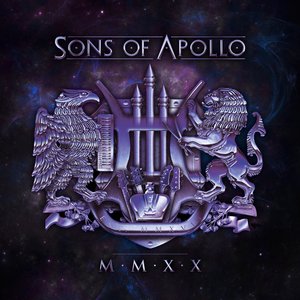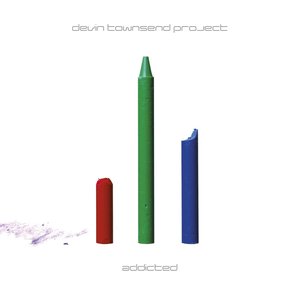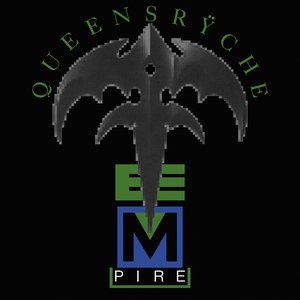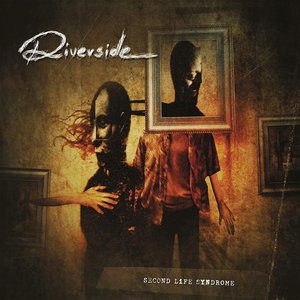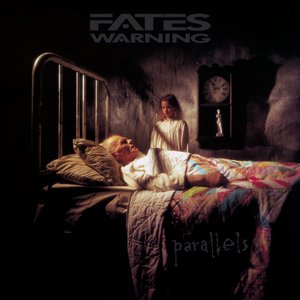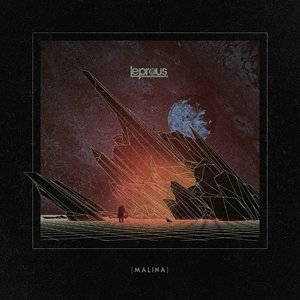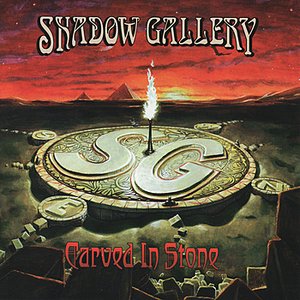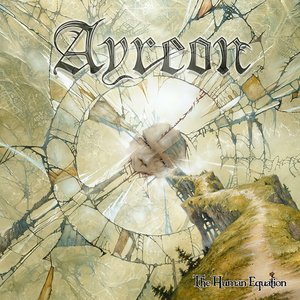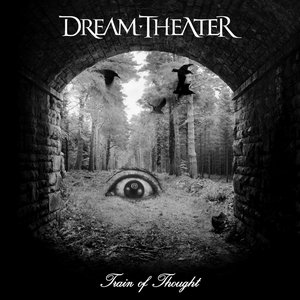Wiki
-
Release Date
23 May 2007
-
Length
8 tracks
Systematic Chaos is the ninth studio album by American progressive metal band Dream Theater. Released on June 4, 2007 in the United Kingdom and June 5, 2007 in the United States, Systematic Chaos was the band's first release through Roadrunner Records. The album was recorded from September 2006 to February 2007 at Avatar Studios in New York City, after the band's first break from summer touring in ten years. The lyrics of the album were written by John Petrucci, James LaBrie, and Mike Portnoy about fictional, political, and personal topics, respectively.
The album peaked in the top twenty in eight countries' sales charts; in addition, the album peaked at the nineteenth position on the Billboard 200, making it the highest peaking Dream Theater album in the United States as of 2008.Critical reception of the album was generally positive; Jon Eardley from MetalReview.com called the band, "arguably the most consistent band throughout the entire progressive rock/metal industry".
Dream Theater promoted the album on their Chaos in Motion world tour, which lasted a year and spanned thirty-five countries. The album was released in regular and special edition formats; the special edition included a 5.1 surround sound mix of the album, in addition to a ninety-minute "making of" documentary about the album.
Background
After recording their twentieth anniversary concert, Score, on April 1, 2006, Dream Theater rested for its first summer in ten years.The band would reconvene at Avatar Studios, in New York City, in September 2006. Mike Portnoy stated that the relationship between band members was "the best it's ever been".The band hired Paul Northfield, who had previously worked with bands that had inspired Dream Theater, including Rush and Queensrÿche, to engineer the album.As with previous albums, Dream Theater simultaneously wrote and recorded Systematic Chaos. Mike Portnoy and John Petrucci co-produced the album; Portnoy said that the band hires an engineer and a mixer to act as an "objective outside ear", but the members ultimately "call their own shots".Previous Dream Theater albums shared planned themes throughout, such as Metropolis Pt. 2: Scenes from a Memory as a concept album or Train of Thought as a heavy, "balls to the wall" album. Though Portnoy had some preconceived ideas for Systematic Chaos, he decided not to tell the rest of the band; leaving them to start with a "completely open palate". However, Portnoy did want to retain a "cutting, aggressive, modern" mood throughout, "It had to have balls," he added, "it had to be cool".
The album was titled Systematic Chaos after Portnoy and Petrucci picked phrases from song lyrics that they felt would be a fitting title, in similar fashion to previous albums Awake or Images and Words. The pair selected the word "chaos", which appears in "The Dark Eternal Night". Petrucci and Portnoy were also attracted to the phrase "Random thoughts of neat disorder" which appears in "Constant Motion". Inspired by the "duality" of the phrase,[opposites of the word "chaos" were discussed, resulting in the word "systematic".Portnoy said that in addition to the album, "systematic chaos" is also a "fitting description of the band in general".
Songs
In the Presence of Enemies
John Petrucci wrote four of the seven songs on the album,telling a fictional story through each one. The first song recorded, the twenty-five-minute epic "In the Presence of Enemies", was described by Petrucci as the "epitome of a Dream Theater creation".He went on to describe the track as "very progressive, very long"; also noting that it set a good tone for writing and recording the rest of the album.The song was split into two parts for the album, due to its being a good open and close to the album. According to Portnoy, the band felt it was too long to open the album, but did not want to close the album with a long song, as they had with the twenty-four-minute title track of their last album. The song is normally played in its entirety in live shows.
Forsaken
Petrucci said "Forsaken" is a story told through a "short song structure". The song tells of a person who is visited at night by a vampiress. While the man thinks he is being shown "beautiful things", in reality he is having his blood sucked by the vampiress.An anime music video of "Forsaken", produced by Gonzo and directed by Yasufumi Soejima, was released on January 26, 2008.The band allowed Soejima artistic freedom with the design of the video,which was set in a science fiction future instead of the present day.
Constant Motion
Portnoy wrote "Constant Motion" as a metaphor for his obsessive-compulsive disorder. It contains a "heavy, upbeat, driving" tempo, which Portnoy feels symbolizes the constant movement of his numerous responsibilities, to the band as well as other side projects.[ For "Constant Motion", the band produced its first music video in over a decade. The track was made available to download for the music video game Rock Band.
The Dark Eternal Night
Petrucci wrote "The Dark Eternal Night" about a long ago pharaoh who has returned as a monster to haunt a town. The song contains an improvised Continuum solo, performed by Rudess while the drum tracks were being recorded; the band members liked the solo enough to keep in the final recording.
Repentance
Portnoy wrote "Repentance" as the fourth part of his Alcoholics Anonymous Suite, a collection of songs from various Dream Theater albums which revolve around his journey through Alcoholics Anonymous. The song discusses steps eight and nine of the process, which deal with making a list of people whom one has wronged and, if possible, making direct amends with them.Portnoy, who as of 2007 has been sober for 7½ years, invited friends and fellow musicians Mikael Åkerfeldt, Jon Anderson, David Ellefson, Daniel Gildenlöw, Steve Hogarth, Chris Jericho, Neal Morse, Joe Satriani, Corey Taylor, Steve Vai, and Steven Wilson to record spoken apologies, regrets, and sorrows of their own,[which were featured throughout the song. Portnoy dedicated "Repentance", "to Bill W. and all of his friends". Portnoy plans to finish the suite on the next Dream Theater album.
Prophets of War
"Prophets of War" was written by James LaBrie, who based the lyrics loosely on Joseph C. Wilson's book The Politics of Truth. The lyrics talk about possible ulterior motives behind the Iraq War, while remaining "middle of the road".The title is a play on words, where the "prophets" of the war, could also be gaining a "profit" from the War.[ During the recording of the song, Portnoy suggested fans could voice certain lyrical chants. In response to a message posted on the band's website Four hundred fans gathered outside the recording studio to record the chanting,however only sixty could fit into the studio.
The Ministry of Lost Souls
At just under fifteen minutes in length, "The Ministry of Lost Souls" is the album's second longest track. Throughout the song's lyrics, Petrucci tells of a person who dies in the process of saving a woman from drowning. However, the woman who is saved is filled with "regret and sorrow" until she is able to re-unite with her rescuer.
Release and promotion
Both the regular and special editions of Systematic Chaos were released on June 4, 2007 in the UK and June 5, 2007 in the US. Over their seven album relationship with Warner Music Group, Dream Theater became disappointed at the lack of coverage they gave the band. "Our previous label basically relied on our fanbase to do everything… put the money up for the record and put the CD in the shops," said Portnoy.On February 8, 2007, Dream Theater reached an agreement with Roadrunner Records to release their new album. Systematic Chaos had nearly been written and recorded at the time of the signing. Ironically, Warner purchased Roadrunner Records a week after the band signed with them.According to LaBrie, Roadrunner followed through on all of its promises to the band concerning the promotion of the album.
Portnoy spent a month directing and editing a documentary titled Chaos in Progress: The Making of Systematic Chaos, which was released on the two disc special edition of the album.The bonus disc of the special edition also included 5.1 surround sound mix of the entire album. Dream Theater supported the album by touring on the Chaos In Progress tour from June 3, 2007 to June 4, 2008. The world tour comprised 115 shows throughout thirty-five countries. Multiple concerts were filmed for the band's fifth DVD, titled Chaos in Motion 2007–2008. The compilation of concerts was released on September 30, 2008.
Reception
Critical reception for Systematic Chaos was generally positive. Writing for MetalReview.com, Jon Eardley called the album, "another solid outing".He complimented Petrucci for "Constant Motion", writing that it contains "some of the best riffs Petrucci has brought to the table". In addition, he called the latter part of "The Dark Eternal Night" "the most brutal part in any song to date". Reviewing for Metal Invader, Nikos Patelis called the album, "energetic, sharp – edged, full of beautiful melodies and heavy riffs, long epic compositions". He called Dream Theater's instrumentalists "four masters of music that use their instruments as if they were their limbs", in addition to stating, "James LaBrie sounds more mature than ever".[ In conclusion, Patelis called Systematic Chaos, "an excellent album that needs many times to be listened in order to be digested". Greg Prato, of Allmusic, wrote ""Forsaken" proves wrong those who say that Dream Theater is all about instrumental gymnastics and not songwriting". He also compared riffs in "The Dark Eternal Night" to the band Pantera. Overall, he states "the quintet sticks to the prog metal game plan that they've followed since their inception".Reviewer Chad Bowar of About.com, wrote that "In The Presence Of Enemies — Part I" is "an effective way to set the tone for the rest of the songs". Overall, Bowar gave the album four out of five stars, calling it, "one of the best Dream Theater releases in quite a while".
Andrew Blackie of PopMatters criticized the album, writing that it was "Full of long-winded songs and flabby arrangements," and suggesting that "the disc suffocates of toothlessness and sheer boredom." Blackie added, ""The Dark Eternal Night" is likely the worst cut these prog-metal aficionados have ever recorded".
The album peaked in the top twenty-five in the United Kingdom and Australia, where the band had never previously charted. In the United States, the album peaked at the nineteenth position on the Billboard 200, making it the highest peaking Dream Theater album in the United States at the time of its release. Overall, Systematic Chaos peaked in the top twenty for album sales in eight countries.
Track listing
1. "In the Presence of Enemies Pt. 1"
I. "Prelude"
II. "Resurrection"
John Petrucci Dream Theater 9:00
2. "Forsaken" Petrucci Dream Theater 5:35
3. "Constant Motion" Mike Portnoy Dream Theater 6:55
4. "The Dark Eternal Night" Petrucci Dream Theater 8:53
5. "Repentance"
VIII. "Regret"
IX. "Restitution"
Portnoy Dream Theater 10:43
6. "Prophets of War" James LaBrie Dream Theater 6:00
7. "The Ministry of Lost Souls" Petrucci Dream Theater 14:57
8. "In the Presence of Enemies Pt. 2"
III. "Heretic"
IV. "The Slaughter of the Damned"
V. "The Reckoning"
VI. "Salvation"
Petrucci Dream Theater 16:38
Chart positions
Chart (2007) Peak Position
Billboard 200 19
ARIA Charts 23
UK Albums Chart 25
Netherlands charts 2
Finnish charts 3
Norwegian charts 3
Swedish charts 5
French charts 14
Swiss charts 14
Austrian charts 20
Belgium charts 44
Personnel
Dream Theater
James LaBrie – vocals
John Myung – bass
John Petrucci – guitar and vocals
Mike Portnoy – drums, percussion and vocals
Jordan Rudess – keyboards and Continuum
Production
John Petrucci and Mike Portnoy – producers
Paul Northfield – engineer, mixing, vocal track co-producer
Chad Lupo – assistant engineer
Hugh Syme – art direction, design, and illustrations
Daragh McDonagh – Dream Theater photography
Album descriptions on Last.fm are editable by everyone. Feel free to contribute!
All user-contributed text on this page is available under the Creative Commons Attribution-ShareAlike License; additional terms may apply.

